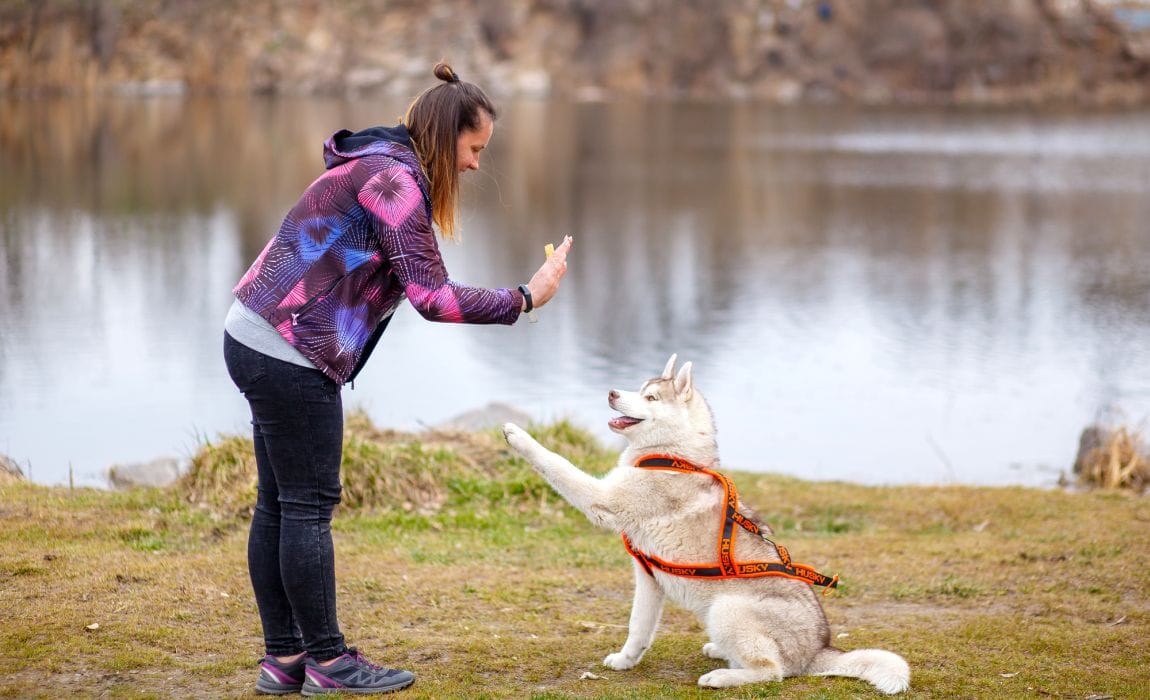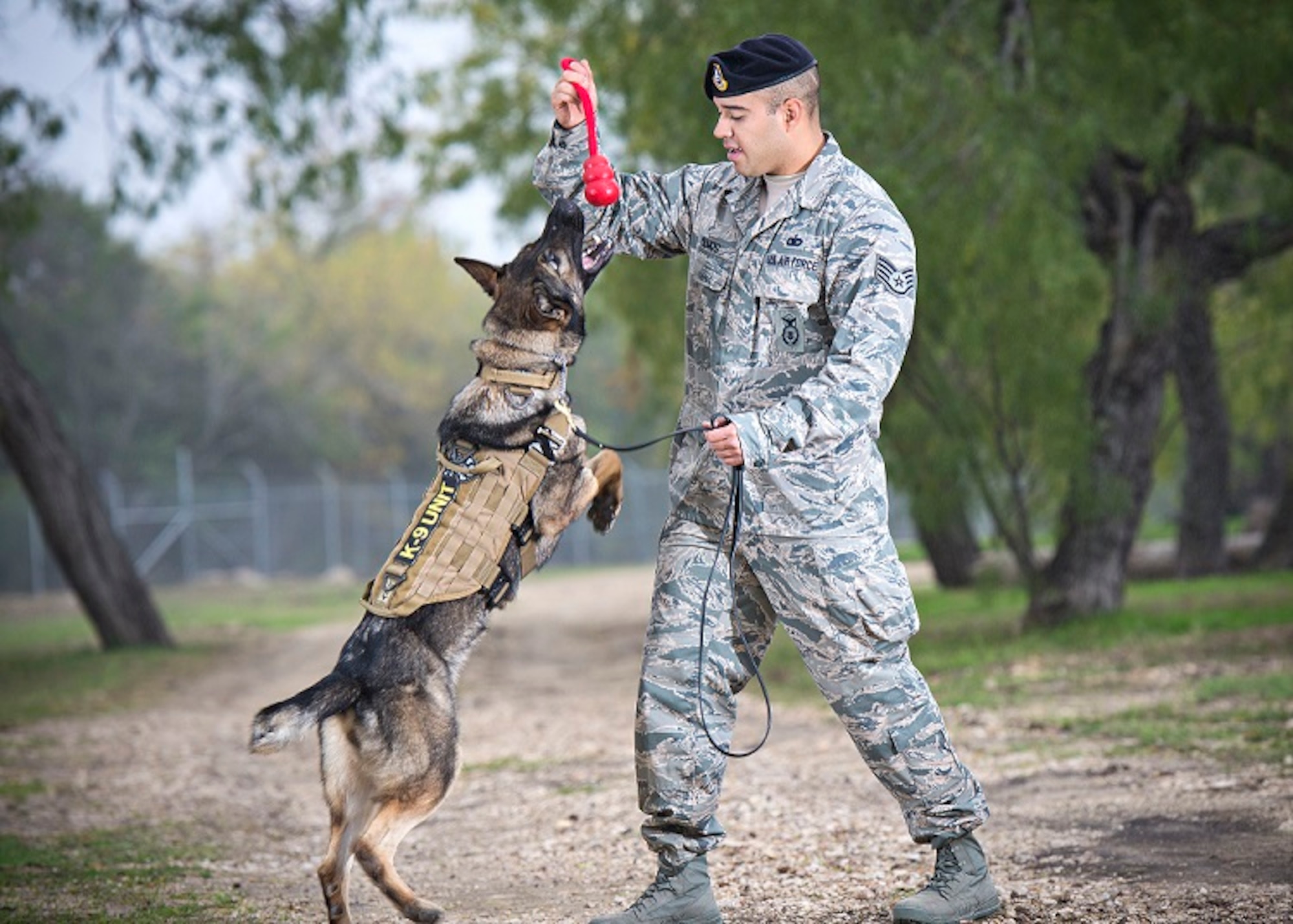Overcoming Challenges in Dog Training: Expert Advice for All Pet Owners
Overcoming Challenges in Dog Training: Expert Advice for All Pet Owners
Blog Article
Top Dog Educating Strategies Every Owner Need To Know

Favorable Reinforcement Methods
Using favorable reinforcement methods is essential for effective dog training, as it cultivates a relying on bond between the canine and the instructor. This approach focuses on gratifying preferable actions instead than penalizing undesirable ones, producing an environment for finding out. Benefits can include treats, praise, or play, which motivate dogs to repeat the actions that gain them these incentives.

Additionally, this technique improves the canine's enthusiasm for training sessions. They are a lot more engaged and responsive when dogs associate training with favorable experiences. Dog training. Past prompt actions modification, favorable reinforcement encourages a collaborative partnership between the pet dog and instructor, minimizing stress and anxiety and worry
To make best use of performance, it is critical to supply benefits immediately, ensuring the pet dog connects the habits with the support. Fundamentally, positive support methods not only produce better-trained dogs yet likewise advertise an unified partnership between canine and owner.
Clicker Training Method
The remote control training approach is a very effective strategy that builds on the principles of favorable reinforcement by adding a distinctive noise to mark desired behaviors. This technique utilizes a small handheld tool that creates a clicking noise, enabling fitness instructors to interact with their dogs in a instant and clear manner. When a dog does a behavior that the proprietor desires to encourage, the clicker is turned on, adhered to by an incentive, usually in the type of treats or praise.
The secret to effective clicker training depends on uniformity and timing. It is crucial to click at the precise moment the preferred actions occurs, guaranteeing that the dog associates the noise with the activity and the subsequent benefit. This approach not only improves interaction yet also promotes a stronger bond between the pet dog and the proprietor, as it encourages involvement and interaction during training sessions.
Remote control training can be put on a variety of habits and commands, from fundamental obedience to much more intricate methods. Its versatility and efficiency make it a favored strategy amongst expert fitness instructors and animal owners alike, leading the way for a responsive and trained canine friend.
Leash Training Basics
Efficient chain training is essential for making certain a safe and pleasurable strolling experience for both pet dogs and their proprietors. Dog training. Leash training need to begin very early and be come close to with patience and uniformity. Beginning by picking an ideal chain and collar or harness. A flat collar may benefit some pet dogs, while others might take advantage of a harness that minimizes drawing.
Present your pet dog to the leash gradually, enabling them to explore it in a comfortable environment. Practice loose-leash walking once they are accustomed. This involves fulfilling your pet dog for strolling beside you rather than drawing ahead. Usage deals with and appreciation to strengthen preferred habits, and make sure to remain assertive and tranquil.
If your dog begins to draw, stop walking immediately. Furthermore, technique numerous strolling environments to help your dog adapt to diversions.
Routine practice will certainly solidify your pet see it here dog's understanding of leash decorum. Bear in mind that leash training is an ongoing procedure; patience and consistency will certainly yield the very best results, cultivating a favorable experience for both you and your canine buddy.
Socializing Strategies
Socializing is a vital aspect of dog training that need to preferably start during puppyhood yet can be valuable at any type of age. Efficient socialization aids pet dogs develop confidence and decreases the likelihood of behavioral problems. To execute effective socializing approaches, expose your pet to a range of settings, individuals, and various other animals.
Begin with controlled site here setups, such as puppy courses or organized playgroups, where young pet dogs can interact securely. Gradually present your canine to new experiences, including various sounds, surfaces, and activities. Make certain these encounters are rewarding and favorable to develop a feeling of safety.
For adult canines or those lacking exposure, begin with low-stress scenarios. Short, positive interactions with tranquil pet dogs and friendly people can produce favorable organizations. Utilize deals with and appreciation to reinforce preferable behaviors during these experiences.

Uniformity and Patience
Identifying the significance of consistency and persistence in pet dog training is necessary for achieving long-term outcomes. Irregular training can lead to complication, making it hard for the pet to grasp habits or commands, ultimately impeding progress.
Pets, like human beings, find out at their own pace. This promotes a trusting partnership between the canine and owner, encouraging a much more passionate and ready learner.
To grow consistency and perseverance, develop a normal training routine, use the exact same commands, and make certain that all household members use the exact same training principles - Dog training. By doing so, you create a stable atmosphere conducive to discovering, allowing your pet dog to create and prosper into a well-behaved friend
Conclusion
To conclude, effective pet dog training techniques, such as favorable support, remote control training, and appropriate chain training, are crucial for cultivating a healthy owner-dog connection. In addition, applying socialization approaches and maintaining consistency and patience throughout the training process contributes significantly to a pet dog's overall well-being. By incorporating these methods, pet dog proprietors can promote the advancement of well-adjusted, loyal family pets, ultimately improving the high quality of life for both the pet dog and the proprietor.
Among the most famous approaches are favorable support, remote control training, and leash training, each offering unique benefits that add to a mannerly dog. As we discover these basic techniques, it ends up being obvious that grasping their nuances can substantially affect the training experience and the pet's overall habits.Using favorable support techniques is special info vital for effective canine training, as it cultivates a trusting bond between the pet and the trainer.In final thought, effective canine training techniques, such as positive support, clicker training, and correct chain training, are necessary for cultivating a healthy and balanced owner-dog connection. By integrating these approaches, pet owners can help with the development of well-adjusted, obedient pet dogs, ultimately boosting the high quality of life for both the proprietor and the pet dog.
Report this page